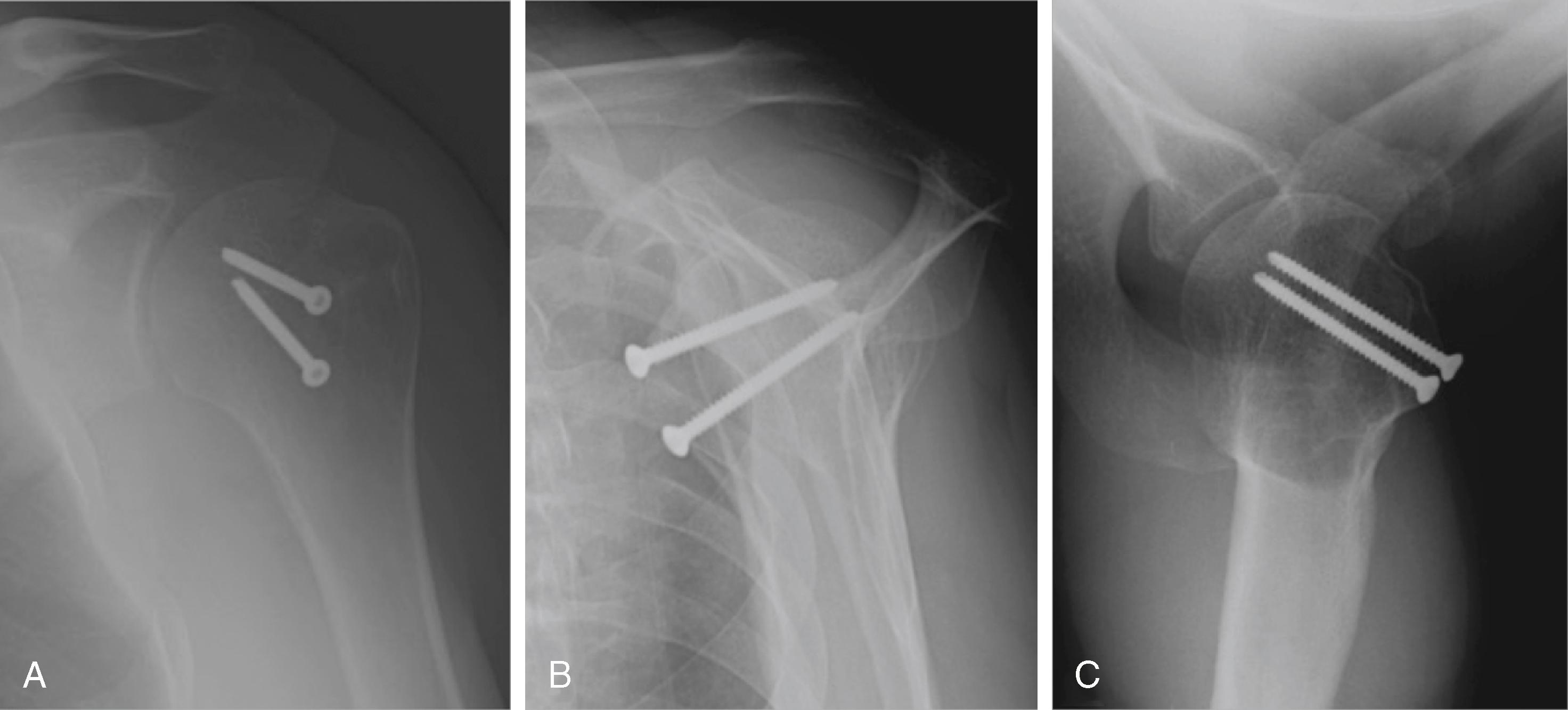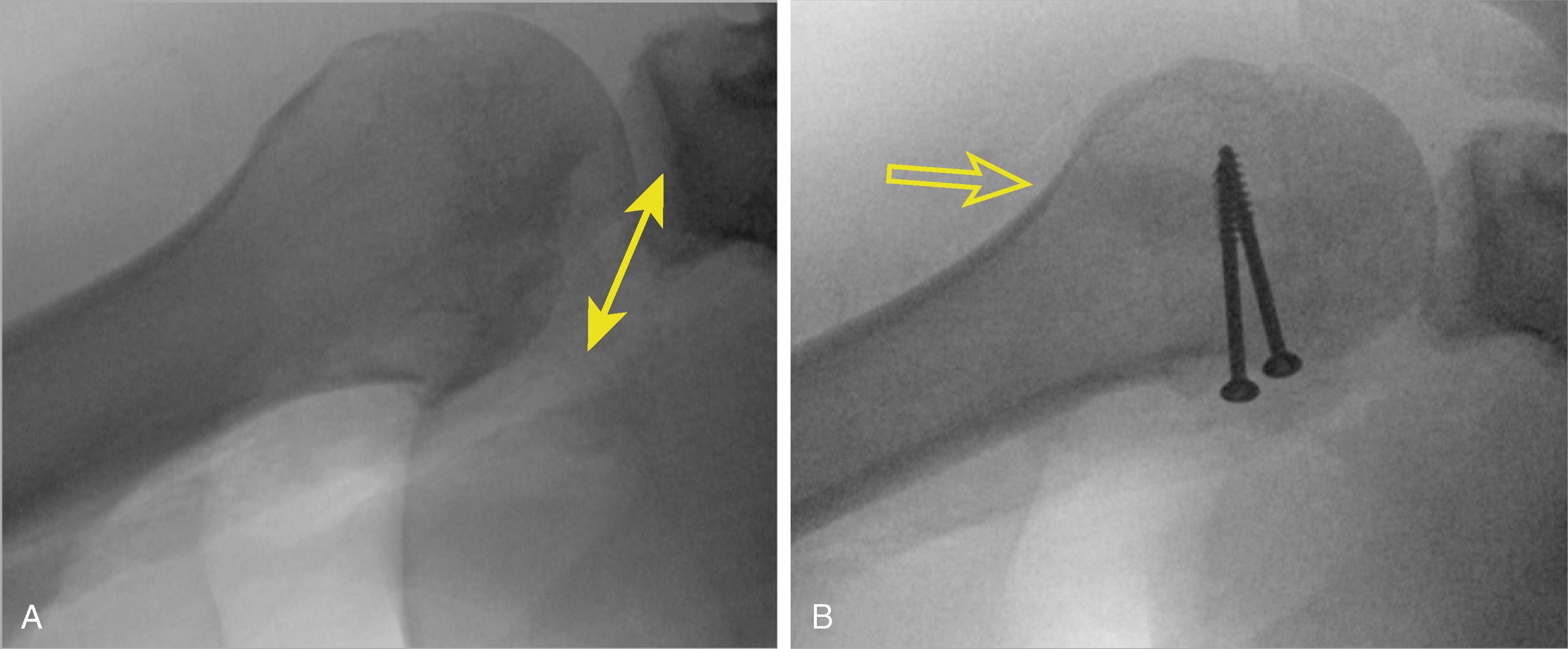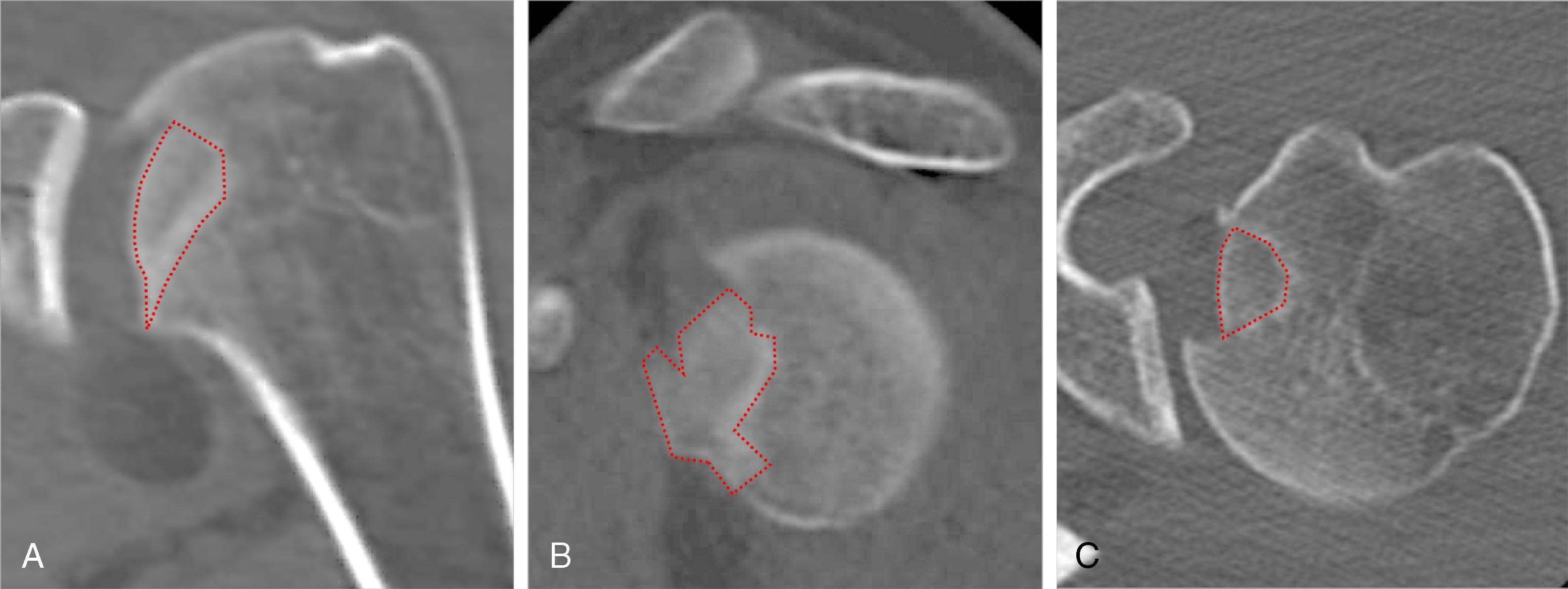Physical Address
304 North Cardinal St.
Dorchester Center, MA 02124
Conflicts of Interest: The position of PCN at the Steadman Philippon Research Institute is supported by Arthrex. PJM is a consultant for and receives royalties from Arthrex, Medbridge, and Springer; owns stock in VuMedi; receives support from the Steadman Philippon Research Institute and Vail Valley Medical Center; and has corporate sponsorship from the Steadman Philippon Research Institute, Smith & Nephew, Arthrex, Siemens, and Össur. BPE reports no conflicts of interest.
Surgical intervention for reverse Hill-Sachs (rHS) lesions is dependent upon the clinical significance of the lesion and symptoms of instability. Considerations include size of the defect, engagement, location, orientation, extent of glenoid bone loss, bone quality, timing (acute vs. chronic), persistent instability, displaced fractures (e.g., lesser tuberosity, glenoid), and the general medical condition of the patient. , Conservative management is generally trialed and can be effective in patients with small nonengaging lesions, and older, less active patients with substantial defects affecting >40% of the humeral head usually require arthroplasty. Treatment decision-making is more challenging for mid-sized defects. Although these lesions have been successfully managed with multiple treatment options including the McLaughlin procedure and associated modified techniques that tenodese the subscapularis into the defect either with or without , the lesser tuberosity, bone allograft reconstruction of the humeral head and rotational humeral osteotomy, clear surgical and technical indications remain ill-defined in the literature.
Anatomic restoration techniques are usually reserved for acute lesions, but have been indicated for lesions presenting up to 6 months post injury. Restorative techniques have been used to treat defects between 20% and 50% of the humeral head. The authors prefer using open reduction and bone disimpaction technique ( Fig. 24.1 ) to treat young, active patients without significant glenoid bone loss who have suffered an rHS impaction fracture subsequent to an acute posterior dislocation with good bone stock, preserved articular cartilage, and humeral head defect between 20% and 40%.

Posterior glenohumeral (GH) dislocation has been reportedly missed on initial evaluation in up to 60%–79% of cases ; therefore, a thorough history and physical examination is imperative, in combination with orthogonal radiographs to include an axillary lateral. If the humeral head remains dislocated, the injured extremity is typically held locked in internal rotation with deficits in both passive and active range of motion (ROM). For cases with a history concerning posterior instability who are not currently dislocated, the posterior drawer, Kim, and Jerk tests can be used to assess posterior instability. Axillary nerve injury is a well-known complication of GH dislocation, with a wide range of reported incidence (3%–40%). , Although these injuries commonly resolve without intervention, prompt identification and management of nerve injury are important to avoid potential long-term functional deficits. Posterior GH dislocation is frequently caused by first seizure and should raise suspicion for an underlying diagnosis of epilepsy ; therefore, history of these symptoms should be assessed and, if present, consultation of a neurologist should be sought to avoid a postoperative seizure that may compromise treatment.
A complete radiographic shoulder series should be ordered (three views: true anteroposterior [AP], axillary, and scapular Y view). Axillary radiographs are imperative to evaluate GH relationships, visualize glenoid rim and lesser tuberosity fractures, and help estimate the size of the defect ( Fig. 24.2A ). If this is not possible due to patient discomfort, a Velpeau view can be obtained. Computed tomography (CT) imaging with or without three-dimensional reconstruction is an invaluable tool in the assessment of osseous morphology and should be obtained to assess for a concentrically reduced GH joint, evaluate posterior bone loss, identify fractures (especially nondisplaced fractures of the anatomic neck and lesser tuberosity), and quantify anterior humeral head defects, including size and location ( Fig. 24.3 ). Magnetic resonance imaging (MRI) can be a helpful adjunct to assess soft tissue pathology including labral tears and capsular injury and laxity especially in chronic or recurrent cases. Practically, the authors typically order a CT scan if the GH joint remains dislocated (“locked dislocation”) to assess for associated fractures that may complicate reduction and an MRI for posterior instability that has been reduced to assess for associated soft tissue injuries.


Become a Clinical Tree membership for Full access and enjoy Unlimited articles
If you are a member. Log in here